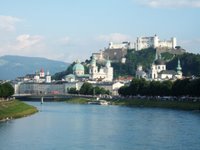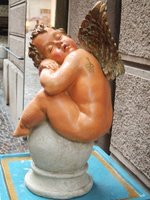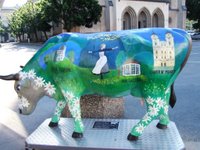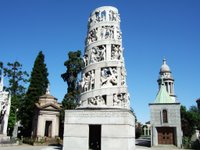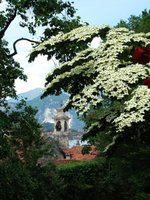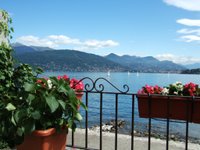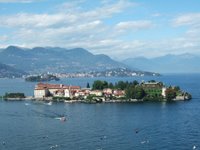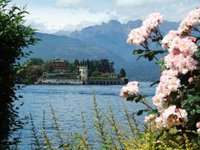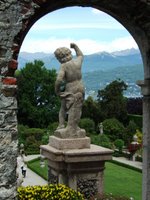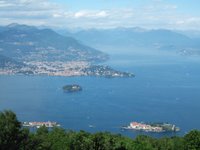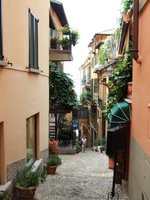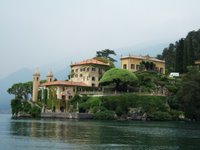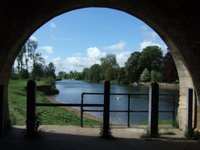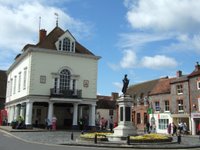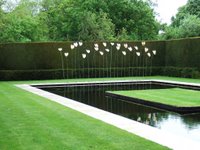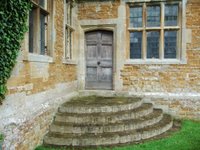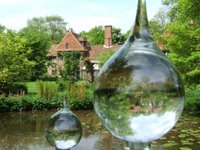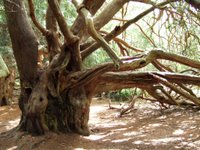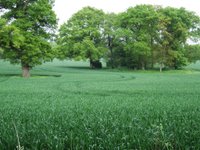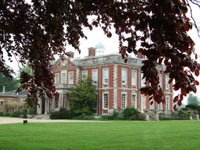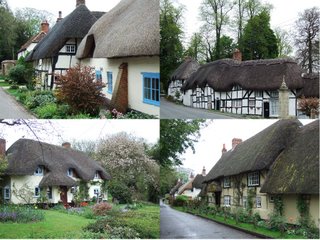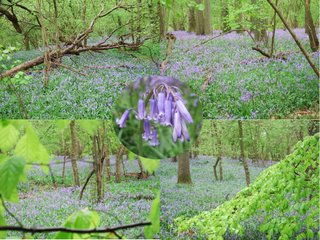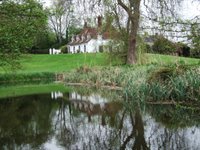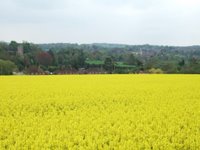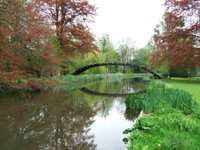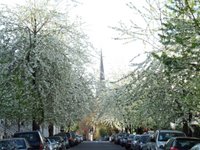
An early Bank Holiday combined with a late spring, meant the weekend was like a blossom festival. After a detour through some very pretty, blossom lined, streets in Kensington we travelled to the south coast for the long weekend.
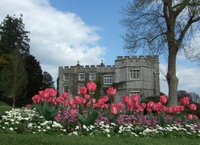
A walk from Rowlinson Castle to Stanstead Park got Saturday off to an energetic start followed by a leisurely stroll around the beautiful West Dean Gardens.

Next stop was the picturesque town of Bosham on the coast. This is where King Canute attempted to stop the tide, and when we were there, it appeared as if he had succeeded. The tide was so far out we were able to negotiate a slimy tidal causeway type path across the bay.
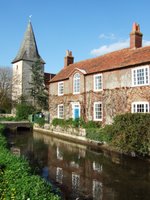
The church is featured in the Bayeux Tapestry as King Harold visited Bosham Church prior to sailing to Normandy in 1064. Harold is said to have prayed in the Saxon church before making the crossing (photo) The appropriate section of the Bayeux Tapestry has been reproduce by a local needlecraft expert and is on display in the church.
After exploring our local town of Emsworth, also in a lovely setting, we had an excellent dinner at one of the many pubs.

Sunday was cloudy, but still fine, so we started the day with a circular walk from Chichester along the canal to the marina and back along the coast finishing in time for the 1.30pm tour of of
Goodwood House.

This beautifully restored castle-like house in a park-like setting was built by one of Charles II's illegitimate sons. Goodwood is famous for it's races, both horses and cars.
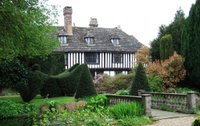
St Mary's House was a complete contrast to Goodwood House. This is one wing of a medieval 'guest house', where monks provided food and lodging for pilgrims walking the South Downs’ Way, headed for Canterbury. The house is so old, but still cosy & very liveable.
St Mary's is in the pretty village of Bramber and next door is another historical town - Steyning, which has 125 listed buildings.
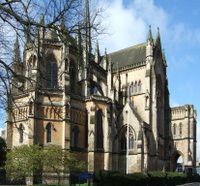
Monday morning began exploring the town of Arundel, which boasts a huge castle & cathedral, both set on hills above the town, a really lovely setting. After a stroll around the town we did a 'proper' walk from 'Lord's Piece' enjoying the bluebells starting to flower and the trees all bursting into leaf at once, after being held back so long by the cold. There was a track marked on the map that seemed to cut off a rather unnecessary dogleg so we followed it down until it ended at gate into a garden. This is not unusual in England and since the gate was not labelled “Private” we opened it and continued along the fence line towards the far gate. About halfway across we were shouted at by the irate landowner for being on his private land and thereby discovered why the dogleg existed in the published walk. .
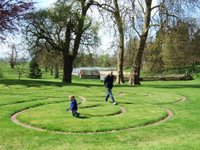
Our final excursion was to
Parham House. An Elizabethan mansion that has been restored to how it would have been. The gardens are beautiful, with many interesting flowers and plants even though it was early spring. It is also home to a rather infuriating turf maze.
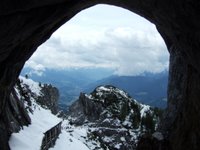 The weather on Monday was a much better, so we took a train trip to Werfen, to visit the ice-caves. These are the largest ice-caves in the world and well worth a visit, provided you attach yourself to a tour that is offering an English as well as a German commentary, as it is a very interesting trip.
The weather on Monday was a much better, so we took a train trip to Werfen, to visit the ice-caves. These are the largest ice-caves in the world and well worth a visit, provided you attach yourself to a tour that is offering an English as well as a German commentary, as it is a very interesting trip.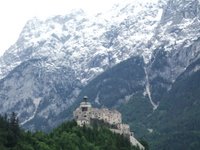
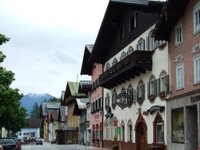 The town of Werfen itself is also pleasant to visit, surrounded by snow-covered mountains and dominated by the fortress of Hohenwerfen.
The town of Werfen itself is also pleasant to visit, surrounded by snow-covered mountains and dominated by the fortress of Hohenwerfen.
